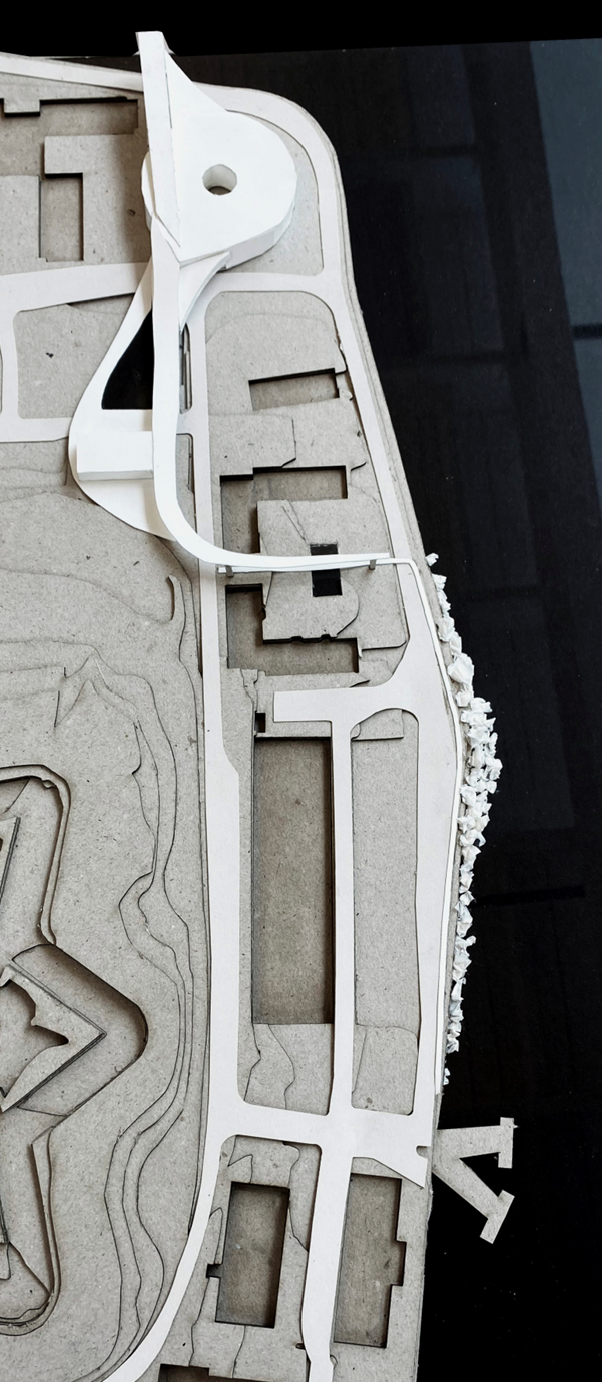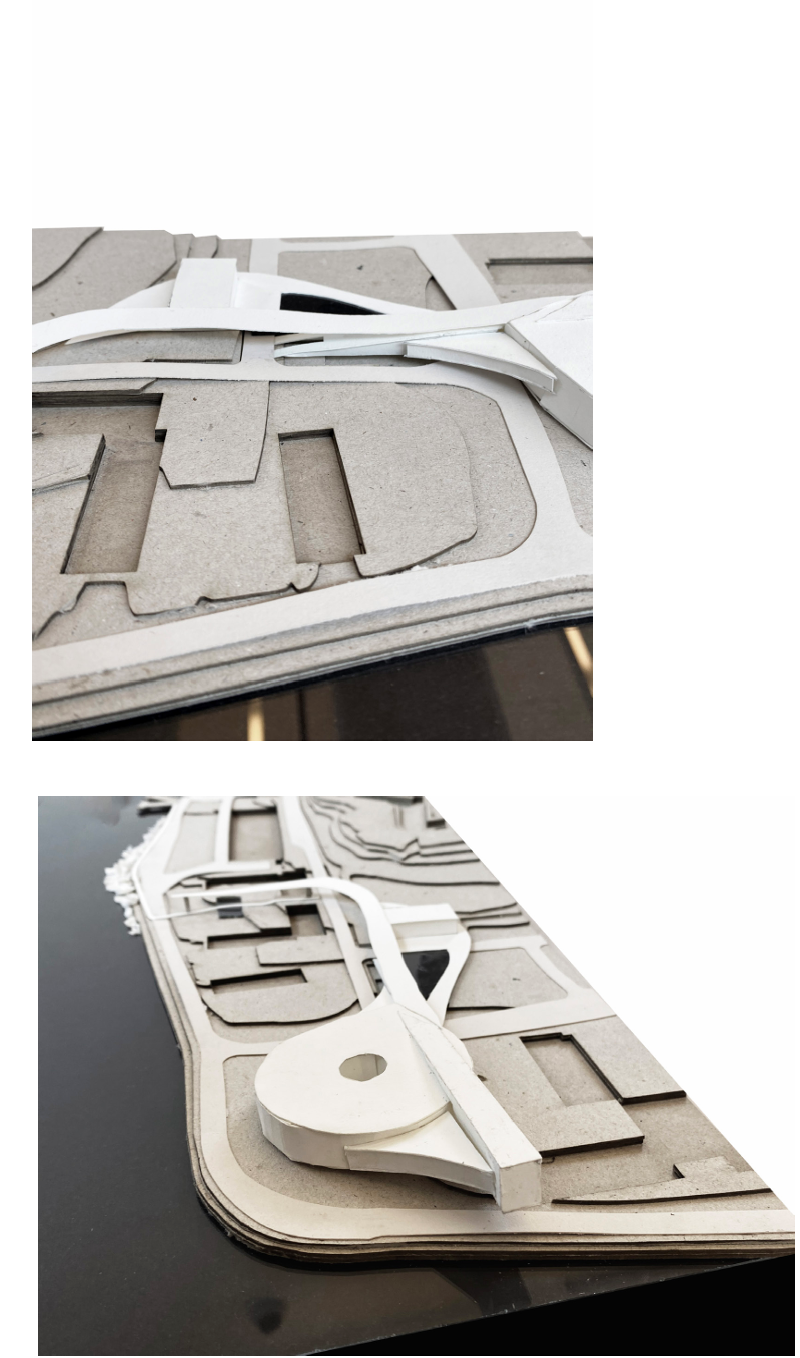Individual project based in Governers Island, NYC
Governors Island, an 172 acre Island in New York Harbor, is now a site of ruin. Abandoned infrastructures of war are frozen in time and unable to be used, while the city is trying to revive this area for public use. Infrastructures of war turn into infrastructures of play in this island, as ice skating rinks, day spas and slides are placed next to prisons and bunkers. The prompt for this assignment was to think of the word “pool” in relation to the island. In this particular site, there is a stand-still. Historic sites remain untouched, and playful interventions come and go. The reality that this island will be mostly underwater in the next 20-30 years shows in the construction of mounds to save the memory of what is left of the land. In this project, I chose to investigate the cause of this: contamination.



Animations showing the past, present, and potential futures for the island.
Governors Island Intervention site plan
THE RITUAL
Step 1: From the dock entering the island, visitors follow the reflective surface along the island's edge. Here, they will find nets along the water's edge that collects the trash in the ocean. The metal panel reflects this on both sides of the visitor.
Step 2: The spa. After bearing witness to the contamination and trash along the path, one can rinse their feet in the chlorinated waters of the QC pool, a tourist attraction for Governors Island's NYC visitors.
Step 3: Bathing. The most intimate encounter with the water. After witnessing the contamination, one connects with the water. By washing one's hands or the bathing of the body before entering the "pool".
Bathroom and locker room floor plans, interior renders


Castle Williams Prison floor plan 1, floor plan 2
Step 4: The entrance to the sensory room and the adjacent outdoor pool. The reflective metal panel continues above the head of the visitor when they chose to enter the outdoor pool to bathe, or to enter the water sensory experience. The entrance of the building peels up from the ground and fully immerses the visitor in this transition.
Step 5: The water sensory experience. Visitors will first drink from the water collected from the roofs, then can enter the steam room to experience water in its altered form or watch the bathers of the adjacent pool swimming.
Step 6: Drink and taste the water, then descend to the steam room. On the steam room, the visitor is fully immersed in the water in a different way than the pool bathers. Once in the steam, the visitor can wipe their hands along the glass wall to view the swimmers in the adjacent pool.
Step 5: Reconnection at the abandoned Castle Williams Prison. Once organized in a panoptic organization, the prison is transformed into a rainwater collection system and indoor reflection pool. The water is transferred to the roof and on its way waters the plantings along the wall, providing life in this once abandoned building that has housed so much suffering.
Shown to the left, the rainwater collection systems also have pipes streaming up to a catchment on the roof for use, and in the process, this waters the plants along interiors of the prison, physically showing how the water can give life in a place that was once so morbid.
Step 7: Rainwater collection pool and confessional pods looking out at the water which were once prison cells.
Step 8: Water Sanctuary and Library. Here at the final step of the ritual, the addition to the building stretches out into the water, and gently rests upon it. After going through the library to read the untold stories of the water, one can sit and admire its beauty in an uninterrupted view of the ocean.


Entrance to the sanctuary, view of the water
Click below to view contamination studies
MODEL PHOTOS








